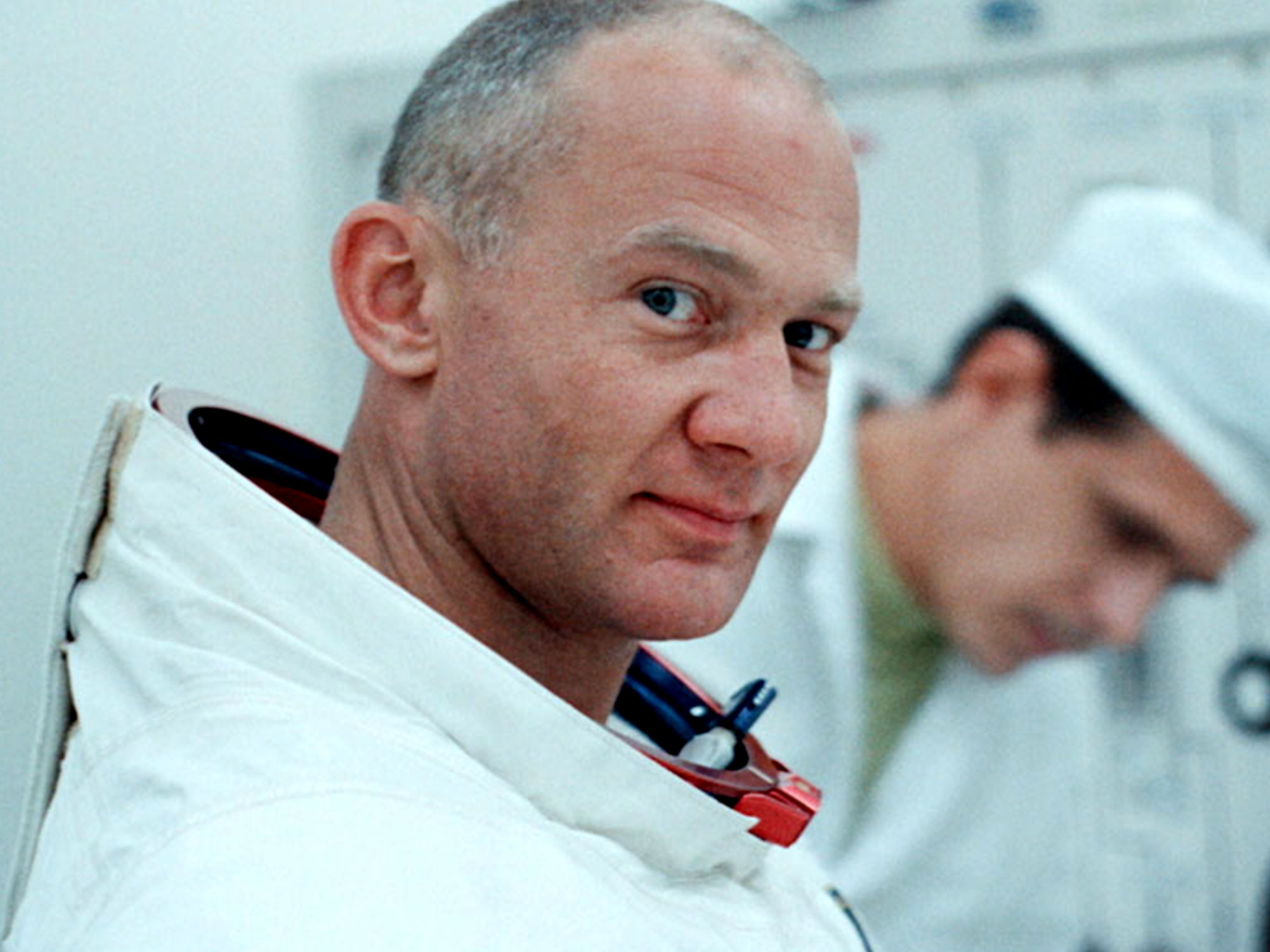
Fifty years on, what’s left to be said about the flight of Apollo 11? The eight-day mission that fulfilled President Kennedy’s eight-year-old pledge to place a man on the moon before the end of the decade is one of the most widely documented events in human history. We all have the fuzzy, black-and-white footage of Neil Armstrong and Buzz Aldrin on the lunar surface etched into our collective memories. We know their words by heart (“The eagle has landed…It’s one small step for man…”), and in 2018, Damien Chazelle recreated the journey from Armstrong’s perspective in the meticulously crafted First Man.
So how can Todd Douglas Miller, the director of Apollo 11, offer us a new perspective? First of all, he has the benefit of using footage that we’ve never seen before, thanks to the discovery in 2017 of a wealth of materials in the NASA archive, including more than 60 reels of 65mm film related to the Apollo 11 mission. Miller is a smart enough filmmaker to know that this footage is his trump card, so he gives it to us straight; no explanatory voiceover, no talking heads, just captivating images that remind us of the awesome scale of this project.
When we first see the magnificent Saturn V, itself being carried into position on enormous caterpillar tracks, it’s hard not be overwhelmed by the sheer size of it, and when this three-million-kilo rocket is launched into the stars it seems like an impossibility, even as we watch it happen in front of our eyes.

Apollo 11 achieves the feat of making us see these events as if we were watching live footage, with no sense of how it was all going to play out. Miller’s skilful editing of the footage gives the film a gripping sense of immediacy and momentum. He occasionally uses onscreen graphics to reinforce our understanding of the mission’s progress and he employs split-screens at critical junctures, but his most effective tactic is a small counter that appears on screen when the astronauts are engaging in a particularly tricky manoeuvre, like landing, docking or re-entry. The falling numbers tell us how much fuel they have to complete each action and how close they are to doing it and, in these moments, the film generates and sustains a remarkable degree of tension.
But for all of the drama surrounding the flight itself, it’s the footage on terra firma that proves to be the most engaging and moving. From the countless NASA engineers and scientists calmly processing a tsunami of data to ensure no detail is left unchecked, to the reporters and families gathered by the launch site in makeshift camps, their faces filled with excitement and wonder, their eyes all fixed upon the same distant point in the sky.
When President Nixon called the Apollo astronauts to congratulate them, he said, “For one priceless moment in the whole history of man, all the people on this Earth are truly one: one in their pride in what you have done, and one in our prayers that you will return safely to Earth.” Apollo 11 is a chronicle of a world united by a single collective human endeavour. Perhaps the reason we keep going back to this story is the knowledge that we’ll never see the like of it again.
The post Apollo 11 appeared first on Little White Lies.
![Forest Essentials [CPV] WW](https://s3-us-west-2.amazonaws.com/pcw-uploads/logos/forest-essentials-promo-codes-coupons.png)
0 comments